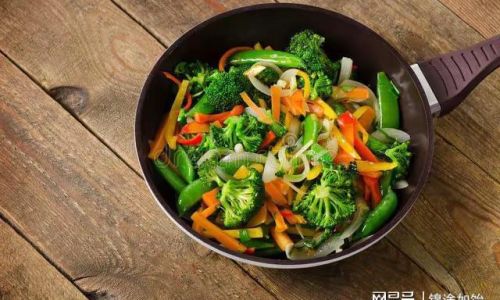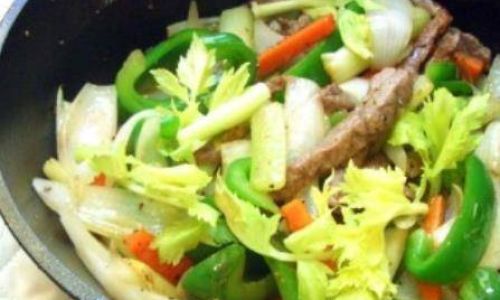Stir-frying, a cornerstone of many Asian cuisines, is a cooking technique that transforms simple ingredients into vibrant, flavorful dishes. At its core, stir-frying involves cooking food quickly over high heat in a small amount of oil while constantly stirring or tossing the ingredients. This method preserves the textures, colors, and nutrients of the components, resulting in dishes that are both visually appealing and delicious. However, achieving stir-fry perfection requires more than just a hot pan and a spatula—it demands precision, timing, and an understanding of key techniques. This article explores the essential skills needed to elevate your stir-frying game, from ingredient preparation to advanced flavor-building strategies.
The Foundation: Heat and Wok Control
The wok, a round-bottomed pan traditionally used in Chinese cooking, is the quintessential tool for stir-frying. Its shape allows heat to distribute evenly across the surface while enabling ingredients to be tossed effortlessly. However, even a large skillet can suffice if a wok is unavailable. The critical factor is heat management.
- High Heat is Non-Negotiable: Stir-frying thrives on intense, direct heat. Preheat your wok or pan until it’s smoking hot before adding oil. This ensures ingredients sear rather than steam, locking in moisture and creating a desirable caramelized exterior.
- Oil Temperature Matters: Use an oil with a high smoke point, such as peanut, canola, or grapeseed oil. Avoid olive oil, which can burn at high temperatures. Add just enough oil to coat the surface—excess oil will make the dish greasy.
- The “Wok Hei” Effect: In Cantonese cuisine, wok hei (literally “breath of the wok”) refers to the smoky, charred flavor imparted by cooking over a blazing-hot wok. To achieve this, ensure your ingredients make direct contact with the wok’s surface and cook in small batches to avoid overcrowding.
Ingredient Preparation: Uniformity and Efficiency
Stir-frying is a fast-paced technique, leaving no room for last-minute chopping or marinating. Proper preparation ensures even cooking and harmonious flavors.

- Mise en Place: Have all ingredients prepped, measured, and within arm’s reach before igniting the stove. This includes chopping vegetables into uniform sizes, marinating meats, and mixing sauces.
- Cutting Techniques:
- Vegetables: Slice uniformly to ensure even cooking. Delicate greens like spinach can be left whole, while denser veggies (broccoli, carrots) should be thinly sliced or julienned.
- Meat and Tofu: Cut against the grain to tenderize tough proteins. For chicken or beef, a thin, even thickness (about ¼ inch) promotes rapid searing. Tofu should be pressed to remove excess moisture before cubing.
- Marinades and Velveting: Marinate meats in a mixture of soy sauce, cornstarch, and baking soda to tenderize and season. The cornstarch also creates a protective coating, preventing overcooking. For ultra-tender results, try the velveting technique: briefly blanch marinated meat in oil or water before stir-frying.
The Cooking Sequence: Order and Timing
Stir-frying is a dance of timing. Ingredients must be added in a specific order to prevent overcooking or undercooking.
- Aromatics First: Begin by stir-frying garlic, ginger, onions, or chili peppers in hot oil. These aromatics release their flavors quickly and form the dish’s base.
- Proteins Next: Add marinated meat or tofu, spreading it in a single layer to ensure even browning. Avoid stirring immediately—let the meat sear for 30 seconds to develop a golden crust.
- Vegetables by Cooking Time: Start with dense vegetables (carrots, bell peppers), followed by quicker-cooking ones (snap peas, mushrooms). Leafy greens go in last to wilt gently.
- Sauce at the End: Pour sauces (soy sauce, oyster sauce, etc.) into the center of the wok, where the heat is most intense. This caramelizes the sauce slightly, deepening its flavor. Toss to coat all ingredients.
Flavor Layering: Balancing Sauces and Seasonings
A great stir-fry is a symphony of flavors—salty, sweet, umami, and spicy notes working in harmony.
- Sauce Ratios: A classic stir-fry sauce combines soy sauce (salt), sugar (sweet), rice vinegar (acid), and cornstarch (thickener). Adjust ratios to taste: 2 tbsp soy sauce, 1 tbsp sugar, 1 tsp vinegar, and 1 tsp cornstarch per serving.
- Umami Boosters: Incorporate oyster sauce, hoisin sauce, or fermented black beans for depth. A splash of Shaoxing wine adds complexity.
- Aromatic Garnishes: Finish with fresh herbs (cilantro, basil), toasted sesame seeds, or a drizzle of chili oil for brightness and texture.
Achieving Perfect Texture: Crisp vs. Tender
The hallmark of a stellar stir-fry is the contrast between tender proteins and crisp vegetables.
- Blanching Vegetables: For stubbornly crisp veggies like broccoli or green beans, blanch them in boiling water for 1–2 minutes before stir-frying. This jump-starts cooking and ensures they retain their crunch.
- Avoid Overcrowding: Cook in batches if necessary. Overcrowding the wok lowers the temperature, causing ingredients to steam instead of sear.
- Toss, Don’t Stir: Use a gentle tossing motion (like flipping pancakes) to coat ingredients without bruising delicate vegetables.
Troubleshooting Common Mistakes
Even seasoned cooks encounter hiccups. Here’s how to fix them:
- Soggy Vegetables: Ensure your wok is hot enough, and avoid adding liquid (like water or soy sauce) too early.
- Tough Meat: Overcooking is the culprit. Remove meat from the wok as soon as it’s no longer pink, even if vegetables remain uncooked.
- Burnt Sauce: Reduce the heat before adding sauces, which contain sugar and can caramelize rapidly.
Advanced Techniques: Elevating Your Stir-Fries
Once you’ve mastered the basics, experiment with these pro-level tips:
- Dry-Frying Spices: Toast whole spices (Sichuan peppercorns, star anise) in a dry wok before adding oil to release their essential oils.
- Two-Step Stir-Fry: Cook meat and vegetables separately, then combine them with sauce at the end. This prevents overcooking and allows flavors to meld.
- Crispy Tofu: Coat tofu cubes in cornstarch before frying to achieve a golden, crispy exterior.
Adaptations for Dietary Preferences
Stir-frying is incredibly versatile. Here’s how to customize it:

- Vegan/Vegetarian: Use tofu, tempeh, or seitan as protein. Add nuts or seeds for texture.
- Gluten-Free: Substitute soy sauce with tamari or coconut aminos. Use arrowroot instead of cornstarch.
- Low-Sodium: Reduce soy sauce and amplify flavor with fresh herbs, citrus zest, or roasted garlic.
Equipment Essentials
While a wok is ideal, these tools can enhance your stir-frying:
- Carbon Steel Wok: Heats quickly and retains high temperatures. Season it regularly to prevent rust.
- Fish Spatula: Its thin, flexible edge is perfect for tossing delicate ingredients.
- Splatter Screen: Protects your stove (and yourself) from oil splatters.
The Final Touch: Presentation and Mindfulness
Stir-frying is as much about aesthetics as taste. Garnish with chopped scallions, toasted sesame seeds, or a sprinkle of chili flakes. Serve immediately to preserve texture—stir-fries are best enjoyed piping hot.
Conclusion: Practice Makes Perfect
Mastering stir-frying is a journey of experimentation and refinement. Start with simple recipes (like garlic bok choy or beef with broccoli), then gradually incorporate complex flavors and techniques. Remember that even professional chefs face hiccups—a slightly overcooked batch of vegetables is a lesson, not a failure. With patience and practice, you’ll soon create stir-fries that rival those of your favorite restaurants. The key lies in understanding the interplay of heat, timing, and ingredients—a dance that, once mastered, transforms cooking into an art form.
So, grab your wok, sharpen your knife, and embrace the sizzle. The world of stir-frying awaits!






0 comments